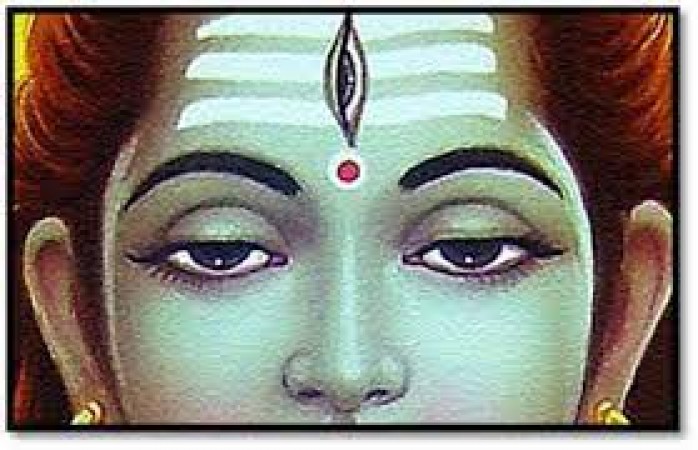
The Third Eye of Shiva, also known as the "Trinetra," is a powerful and iconic symbol in Hindu mythology and spirituality. Representing the divine insight and intuitive knowledge of Lord Shiva, the Third Eye carries profound meaning and significance. The Third Eye of Shiva stands as a powerful symbol in Hindu mythology and spirituality. It represents the profound qualities of intuition, divine insight, and spiritual wisdom. Shiva's Third Eye embodies the transformative power of destruction, symbolizing the impermanence of the material world and the path to spiritual liberation. Through meditation and introspection, devotees seek to awaken their own Third Eye, connecting with their inner divinity and attaining higher states of consciousness. The Third Eye remains a timeless and revered emblem of the profound spiritual journey within Hinduism, reminding us of the boundless potential for enlightenment that lies within each individual.
In Hindu iconography, Lord Shiva is often depicted with a vertical, oval-shaped eye on his forehead, between his eyebrows. This eye is the Third Eye, which is believed to possess the ability to see beyond the physical realm into the metaphysical dimensions. Unlike our two regular eyes, the Third Eye is considered a spiritual eye that bestows divine perception and wisdom upon Lord Shiva. According to Hindu mythology, the Third Eye remains closed most of the time, but Lord Shiva can open it at will. When Shiva opens his Third Eye, it emits a fiery, intense light that has the power to destroy anything it gazes upon. This act of opening the Third Eye is associated with Shiva's role as the "Destroyer" in the divine trinity of Brahma (the Creator), Vishnu (the Preserver), and Shiva (the Destroyer). The Third Eye's destructive power symbolizes the dissolution of ignorance, delusion, and the impermanent aspects of existence. It signifies the transformation of the material world and the release from the cycle of birth and death (samsara) to achieve spiritual liberation (moksha). In this sense, Shiva's Third Eye represents the cyclical nature of creation, destruction, and rebirth, which is an essential aspect of Hindu cosmology.
Beyond its destructive aspect, the Third Eye also represents divine knowledge and wisdom. Lord Shiva's intuitive insight allows him to perceive the true nature of reality, transcending the limitations of ordinary sight. It symbolizes the ability to see the interconnectedness of all things and to comprehend the deeper meanings hidden within the universe. The Third Eye has a profound connection to the practice of yoga and meditation in Hindu spirituality. It is considered the center of higher consciousness and spiritual awakening. Through dedicated meditation and inner focus, practitioners aim to activate their own Third Eye, thereby gaining heightened awareness, intuition, and enlightenment. The depiction of Lord Shiva with his Third Eye has been a recurring theme in Indian art, sculptures, and temple architecture for centuries. It serves as a potent symbol of Shiva's divine nature and spiritual significance, inspiring devotees and artists alike.
Also read -Shiv Chalisa: Devotional Verses Honoring Lord Shiva
Hanuman Ashtak: A Reverent Hymn Celebrating the Mighty Hanuman
The Significance of Ganesh Chaturthi: Celebrating the Remover of Obstacles